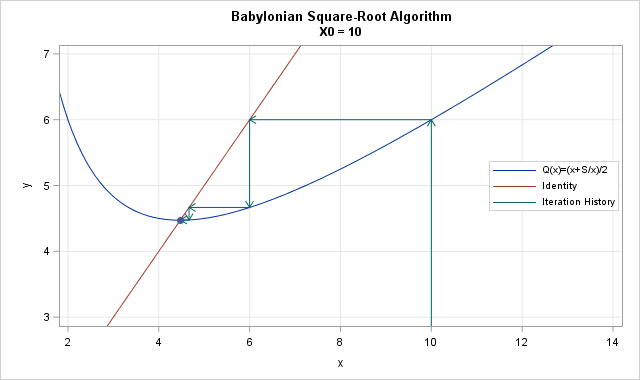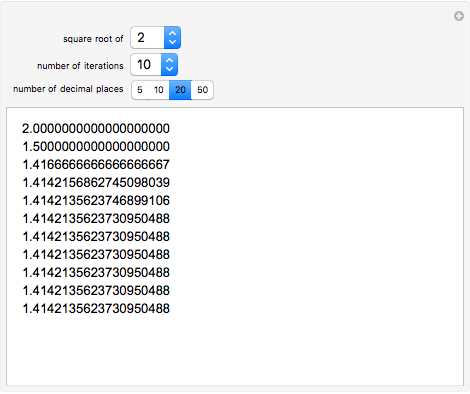(4) Recursion
About
:octocat: GitHub: All of the example code: repo (link)
:page_facing_up: blog link: https://purrgramming.life/cs/programming/fp/ :star:
Topics
- Recursion
- Tail Recursion
- Coursework solutions
Background
Recursion is the process of defining a problem (or the solution to a problem) in terms of (a simpler version of) itself.
For example, we can define the operation "find your way home" as Stop moving if you are at home.
image source: https://stackoverflow.com/questions/13242050/java-recursion-triangle-with-deviation

Recursion
In Scala, recursive functions are functions that include calls to themselves in their definition, they
- do not always terminated
- require an explicit return type in Scala (the return type can be omitted in non-recursive functions, but it is required by the compiler for recursive functions)
- are not introduced by a dedicated keyword
Example: squareRoot
We will define in this session a function
/** Calculates the square root of parameter x */
def squareRoot(x: Double): Double = ... The classical way to achieve this is by successive approximations using Newton’s method.
To compute squareRoot(x):
- Start with an initial estimate y (let’s pick
y = 1). - Repeatedly improve the estimate by taking the mean of y and x/y.
image source: https://blogs.sas.com/content/iml/2016/05/18/newtons-method-babylonian-square-root.html

Example: x = 2
| Estimation | Quotient | Mean |
|---|---|---|
| 1 | 2 / 1=2 | 1.5 |
| 1.5 | 2 / 1.5=1.333 | 1.4167 |
| 1.4167 | 2 / 1.4167=1.4118 | 1.4142 |
| 1.4142 | … | … |
image source: https://demonstrations.wolfram.com/FindingATangentLineToAParabola/

So, let us
- define a test to check for termination
- define a function improve to improve an estimate
- define a function that computes one iteration step
- Note that
squareRootIteratoris recursive; its right-hand side calls itself.
- Note that
- define the squareRoot function
import scala.math.{abs, pow, sqrt}
// define the squareRoot function:
def squareRoot(squareNum: Double) = {
// define what is "Good enough"
// Avoid magic numbers
val accuracy = 0.001
// define a test to check for terminatation:
def isGoodEnough(guessedSquareRoot: Double) =
abs(guessedSquareRoot * guessedSquareRoot - squareNum) < accuracy
// define a function improve to improve an estimate
def improve(guessedSquareRoot: Double) =
(guessedSquareRoot + squareNum / guessedSquareRoot) / 2
// define a function which computes one iteration step
// Note that `squareRootIterator` is recursive,
// its right-hand side calls itself.
def squareRootIterator(guessedSquareRoot: Double): Double =
if (isGoodEnough(guessedSquareRoot)) guessedSquareRoot
else squareRootIterator(improve(guessedSquareRoot))
squareRootIterator(1.0)
}
// Results are not bad
squareRoot(4)
// val res0: Double = 2.0000000929222947
squareRoot(2)
// val res1: Double = 1.4142156862745097Limitation
Double not accurate: are infinite possible real numbers and an only finite number of bits to represent these numbers, so:
- The isGoodEnough test is not very precise for small numbers
- The isGoodEnough test is non-termination for very large numbers.
Bad Examples
- 0.001 – not very precise
- 10^(50) – non-termination
// Bad example
squareRoot(0.001)
// val res2: Double = 0.04124542607499115
// Correct answer
sqrt(0.001)
// val res3: Double = 0.03162277660168379
// -------------------------
val largeNumber: Double = pow(10, 50)
// Correct answer
sqrt(largeNumber)
// val res4: Double = 1.0E25
// Bad example
squareRoot(largeNumber)
// Never terminate Tail Recursion
Definition
If a function calls itself as its last action, like the greatest common divisor, the function’s stack frame can be reused with tail recursion.
In summary, a tail-recursive function
- are iterative processes
- can be optimized by reusing the stack frame in Scala
- calls itself as its last action
Tail Recursion Example
Example of tail recursion functions, i.e., A recursive function that calls itself as its last action
Impl of the function that computes the greatest common divisor of two numbers using Euclid’s algorithm:
Please note: it calls itself as its last action
// Euclid’s algorithm
// Greatest Common Divisor
def gcd(a: Int, b: Int): Int = {
if b == 0 then a else gcd(b, a % b)
}
gcd(14, 21)// val res0: Int = 7
//→ if 21 == 0 then 14 else gcd(21, 14 % 21)
//→ if false then 14 else gcd(21, 14 % 21)
// → gcd(21, 14 % 21)
// → gcd(21, 14)
//→ if 14 == 0 then 21 else gcd(14, 21 % 14)
// →→ gcd(14, 7)
// →→ gcd(7, 0)
//→ if 0 == 0 then 7 else gcd(0, 7 % 0)
// → 7Non-Tail Recursion Example
Example of non-tail recursion functions, i.e., A recursive function that does not calls itself as its last action.
Consider factorial:
def factorial(n: Int): Int =
if n == 0 then 1 else n * factorial(n - 1)
factorial(4) // val res1: Int = 24
//→ if 4 == 0 then 1 else 4 * factorial(4 - 1) 3-> →→ 4 * factorial(3)
// →→ 4 * (3 * factorial(2))
// →→ 4 * (3 * (2 * factorial(1)))
// →→ 4 * (3 * (2 * (1 * factorial(0)))
// →→ 4 * (3 * (2 * (1 * 1)))
// →→ 24@tailrec
Tail recursion can be annotated with @tailrec so that the compiler will succeed only if it can verify that the function is indeed tail recursive, i.e. performance optimization.
import scala.annotation.tailrec
@tailrec def gcd(a: Int, b: Int): Int = {
if b == 0 then a else gcd(b, a % b)
}Note: If we try to add `tailrec` to non tail recursive functions like `factorial`, we will get error
@tailrec \\ ERROR: Cannot rewrite recursive call: it is not in tail position
def factorial(n: Int): Int =
if n == 0 then 1 else n * factorial(n - 1)non @tailrec -> @tailrec
We can change non @tailrec recursive functions to @tailrec.
@tailrec def factorialTailRec(n: Int, lastFactorial: Int): Int =
if n == 0 then lastFactorial else factorialTailRec(n - 1, n * lastFactorial)
factorialTailRec(4, 1) // val res1: Int = 24W1 Coursework
Pascal's Triangle
The following pattern of numbers is called Pascal's triangle.
1
1 1
1 2 1
1 3 3 1
1 4 6 4 1
...The numbers at the edge of the triangle are all 1, and each number inside the triangle is the sum of the two numbers above it. Write a function that computes the elements of Pascal's triangle using a recursive process.
Do this exercise by implementing the pascal function, which takes a column c and a row r, counting from 0 and returns the number at that spot in the triangle. For example, `pascal(0,2)=1, pascal(1,2)=2 and pascal(1,3)=3.`
def pascal(col: Int, row: Int): Int = {
if (col == 0 && row == 0) 1 else if (col < 0 | row < 0) 0
else pascal(col - 1, row - 1) + pascal(col, row - 1)
}Testing
def main(args: Array[String]): Unit =
println("Pascal's Triangle")
for row <- 0 to 10 do
for col <- 0 to row do
print(s"${pascal(col, row)} ")
println()Result
1
1 1
1 2 1
1 3 3 1
1 4 6 4 1
1 5 10 10 5 1
1 6 15 20 15 6 1
1 7 21 35 35 21 7 1 Parentheses Balancing
Write a recursive function that verifies the balancing of parentheses in a string, which we represent as a List[Char], not a String. For example, the function should return true for the following strings:
-
(if (zero? x) max (/ 1 x))
-
I told him (that it's not (yet) done). (But he wasn't listening)
The function should return false for the following strings:
-
: - )
-
())(
The last example shows that it's not enough to verify that a string contains the same number of opening and closing parentheses.
Do this exercise by implementing the balance function. Its signature is as follows:
def balance(chars: List[Char]): BooleanThere are three methods on List[Char] that are useful for this exercise:
-
chars.isEmpty: Boolean returns whether a list is empty
-
chars.head: Char returns the first element of the list
-
chars.tail: List[Char] returns the list without the first element
Hint: you can define an inner function if you need to pass extra parameters to your function.
Testing: You can use the toList method to convert from a String to a List[Char]: e.g. `"(just an) example".toList.`
def balance(chars: List[Char]): Boolean = {
var parenthesesStack = new Stack[Char]()
@tailrec def balanceRec(chars: List[Char]): Boolean = {
if (parenthesesStack.isEmpty && chars.isEmpty) true
else if (parenthesesStack.nonEmpty && chars
.isEmpty) false else {
chars.last match {
case ')' => {
parenthesesStack.push(')')
balanceRec(chars.dropRight(1))
}
case '(' => {
if (parenthesesStack.nonEmpty && parenthesesStack.pop == ')') balanceRec(chars.dropRight(1))
else false
}
case _ => balanceRec(chars.dropRight
(1))
}
}
}
val isBalanced = balanceRec(chars)
parenthesesStack = Stack[Char]()
isBalanced
}Counting Change
Write a recursive function that counts how many different ways you can change an amount, given a list of coin denominations. For example, there are 3 ways to change for 4 if you have coins with denominations 1 and 2: 1+1+1+1, 1+1+2, 2+2.
Do this exercise by implementing the countChange function. This function takes an amount to change and a list of unique denominations for the coins. Its signature is as follows:
def countChange(money: Int, coins: List[Int]): IntOnce again, you can use functions isEmpty, head and tail on the list of integers coins.
Hint: Think of the degenerate cases. How many ways can you give change for 0 dollars? How many ways can you give change for >0 dollars if you have no coins?
def countChange(money: Int, coins: List[Int]): Int = {
if (money < 0 || coins.isEmpty) 0
else if (money == 0) 1
else {
val withFirstCoin = countChange(money - coins.head, coins)
val withoutFirstCoin = countChange(money, coins.drop(1))
withFirstCoin + withoutFirstCoin
}
}